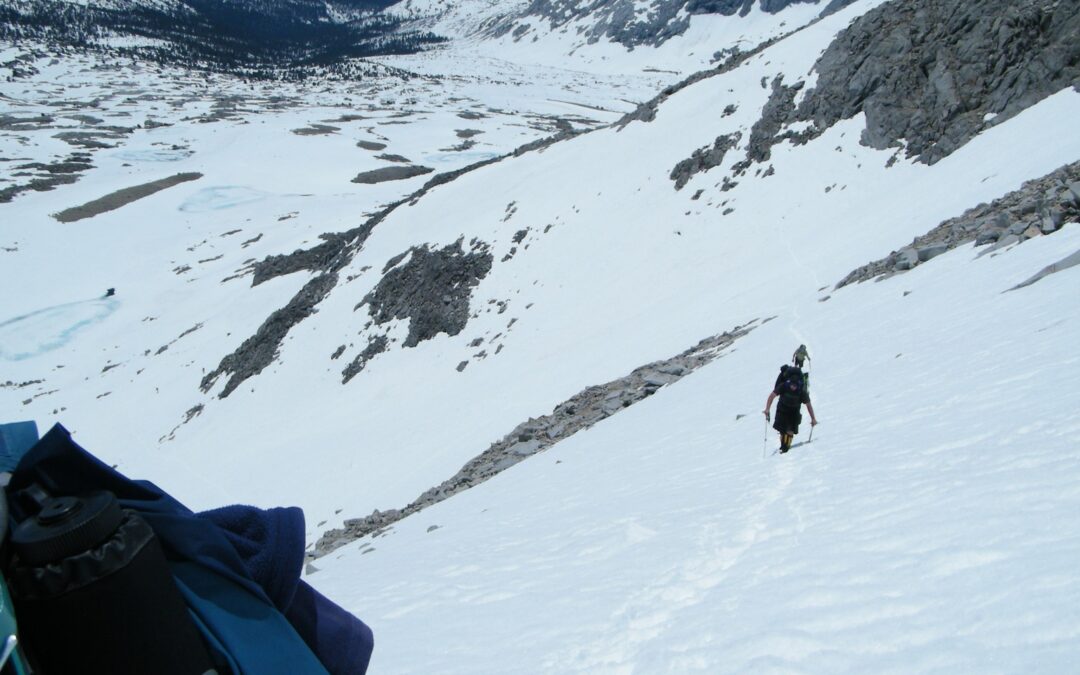“An ounce of prevention is worth a pound of cure.” – Benjamin Franklin.
I was looking at this picture that I placed in a JMT comment this morning and I asked myself, “What would happen to the central figure, if he slipped and fell downhill?”
I want you to study this person’s balance and put yourself in his shoes.
He has an ice axe in his uphill hand, but it doesn’t have a snow basket on its shaft (it is sinking into the snowpack, already), so it can’t be used to protect his balance, thus, prevent a fall. If he has to suddenly lean on it to catch his balance, it will plunge into the snowpack and he will fall.
Lesson-1: An ice axe without a snow basket does not function the same as a hiking pole with one for maintaining your balance and preventing falls!
Conversely, if he were to be using his axe as an anchor on this shallow grade of slope, meaning that with each step he would be sinking his axe fully into the snowpack all the way to its head, the “anchor” would be in position to stop a tumble after the fall, but his top-heavy body would be ridiculously bent over and out of balance with every step, thus, encouraging the chance of a fall.
Lesson-2: using an axe as an uphill anchor requires a steep enough of a traverse that allows the axe to be fully inserted into the snowpack WHILE the user is standing upright with all his weight over and on his hiking crampons.
The “Ounce of Prevention” for the Snow-Hiker:
The use of a short axe without a basket on shallow grades promotes falls while the use of two poles with baskets Prevents them.
Utilizing some form of traction aid on your feet Prevents slip-and-falls (the longer the teeth, the stiffer the frame around the shoe, the better)
Knowing that the “pick” on an ice axe’s head is the tool used to self-arrest a tumble, and retaining it always in-hand while attached to a pole (the Self-Arrest Pole), you can always prevent a fall turning into an out-of-control tumble by using it to arrest the slide before you strike something.

